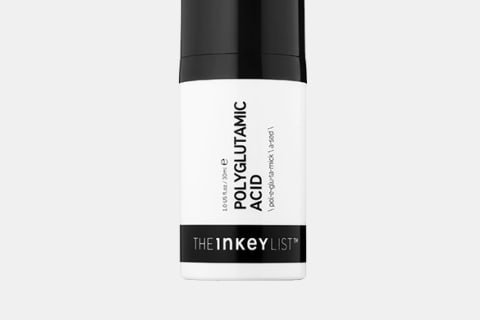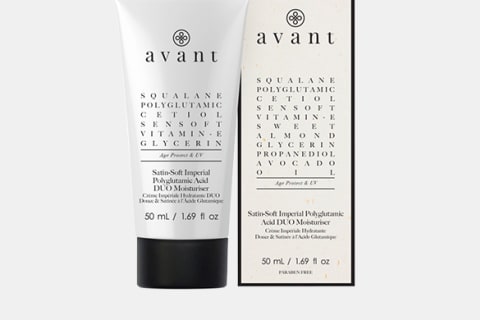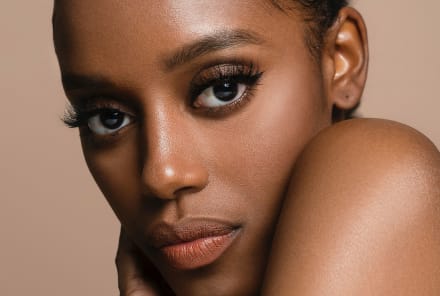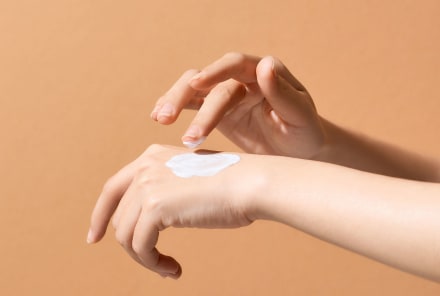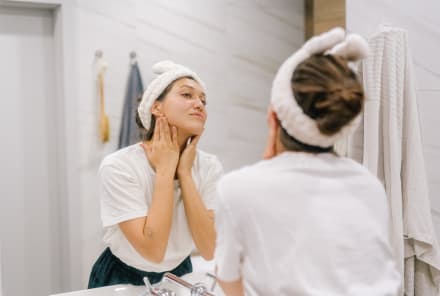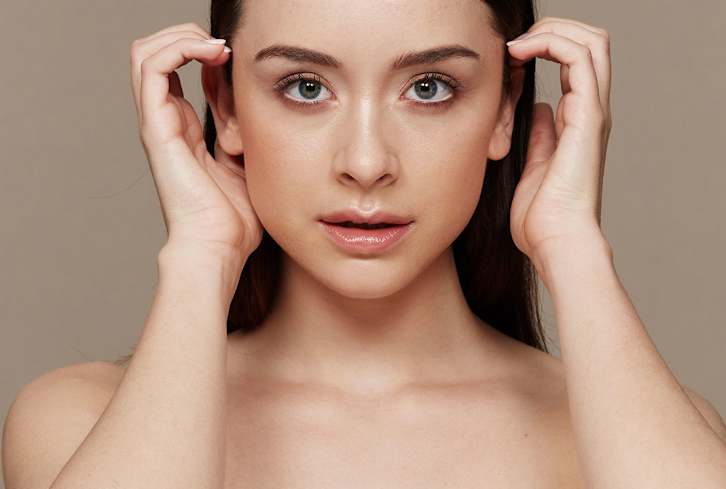Advertisement
Polyglutamic Acid: A Guide To The Hydrating Skin Care Ingredient


Let's say it together: You need to hydrate your skin! I'm going to assume you read that out loud enthusiastically, and move right along. But do you feel you are constantly looking for a moisturizer that actually gets the job done? Certainly there are a lot of us out there. Somehow, no matter what, we feel that by the end of the day our skin looks a bit dehydrated, stressed, and less than supple. Annoying, no?
If that sounds like you, you may consider polyglutamic acid (PGA). Before you are alarmed by the acid part, just know that this is an acid like hyaluronic, not the peel-your-face-off variety. And it's a relatively new ingredient—read: not brand-new to the market but fresh enough that it's still considered under-the-radar—that is considered to be one of the most effective humectants around.
Have we piqued your interest? Good, let's read on for more.
What is polyglutamic acid?
This fancy-sounding ingredient is actually a byproduct of when you ferment soybeans. Essentially, "it's created when lots of glutamic acid molecules (an amino acid) are linked together," notes board-certified dermatologist Hadley King, M.D. If that sounded too science-jargony, here's the breakdown: Amino acids are organic compounds that are the building blocks of proteins in both plants and animals. "Amino acids play an instrumental role in many ways," says board-certified dermatologist Keira Barr, M.D. "They're involved in many chemical reactions throughout your body to help maintain your body's normal functions, including that of your skin."
For this reason, they are utilized in skin care—but there are many types of amino acids that are extracted from several different sources (for skin care, the two most common sources are soy and quinoa). When used topically, they can have a variety of functions: Some act as an antioxidant and neutralize free radicals, some encourage your body to make its own antioxidants, and others help transport water, effectively acting as a hydrator.
This ingredient falls into the last category as a humectant; humectants are classes of hydrators that work by drawing in and holding on to water molecules. "Polyglutamic acid is a powerful humectant that can hold four times more water than hyaluronic acid," says King. Hyaluronic acid, for reference, holds up to 1,000 times its weight in water.
Summary
Polyglutamic acid (PGA) is a humectant that holds in up to 4,000 times its weight in water. It is made up of a long chain of the amino acid glutamic and produced as a byproduct of soybean fermentation.
What are the benefits of polyglutamic acid?
This buzzy topical has several primary benefits that you can count on:
- Superstar humectant. "Humectant basically just means it's great for hydrating the skin," says Hadley. Humectants—such as glycerin and hyaluronic acid—are popular ingredients in many skin care products, and PGA joins the ranking as one of the most effective. As a reminder: For humectants to properly do their job, they need water, as they don't contain water naturally—always be sure to layer them atop damp skin and then seal them in with a more occlusive product on top.
- Protects skin. While humectants should be paired with occlusive ingredients or products to help water trapped in skin, PGA also has some protective qualities as well: "It also forms a protective barrier over the skin that can help hold in the moisture," says King. This, in turn, can help your skin barrier function.
- Helps stabilize hyaluronic acid. So while HA and PGA tend to be compared to one another, don't think of them as competitors—think of them as co-workers. See, HA is naturally found in the skin; PGA is not. However, HA does decline with age, as it's broken down by enzymes. But PGA actually inhibits these enzymes so your skin is able to hold onto more of its own HA naturally. Teamwork.
Who can use it, and how do you use it?
Polyglutamic acid is a very tolerable ingredient—meaning anyone from sensitive-skin folk to oily skin types can use it. Those who will likely get the most benefits out of it are those with dry, irritated skin and those who naturally have a weakened skin barrier.
As for how, you’ll want to note the type of product it's formulated in, as that will affect the layering process. But the general thought process is be sure to layer the product on freshly washed yet damp skin (if you're using it as serum or moisturizer, you can also spritz on a toner prior to application if you want another cushion of hydration.) You want your skin to be damp so the ingredient has water at the ready to pull in. If your product does not have additional occlusive ingredients, you'll want to follow up with a cream or oil to help seal it off.
What does it pair well with?
Luckily, polyglutamic acid plays well with a lot—so not only can you get hydration benefits, but you can also get extras like brightening, skin repair, or so on.
- Vitamin C: Vitamin C is a potent antioxidant that helps collagen production and brightens tone. It's also a notoriously finicky ingredient that doesn't always mix well—but it does with PGA.
- Niacinamide: This form of vitamin B3 is not only a solid hydrator itself, but it can soothe inflammation and discoloration and supports the skin barrier.
- Alpha-hydroxy acids: AHAs, like lactic and glycolic, are excellent chemical exfoliators. While they are generally tolerable, especially the very gentle lactic acid, you can buffer them additionally with hydrators to ensure your skin stays supple while sloughing off dead skin cells.
What are the best options on the market?
So, because it's relatively new, you won't find too many options out there, yet. In the meantime, here are our favorites on the market—clean and natural, of course.
The takeaway.
Glowing, soft, hydrated skin is often the goal. Yet, so frequently products fall short of helping us get there. If you find your skin is usually in need of extra moisture, consider polyglutamic acid. It's a superstar humectant that binds together an impressive amount of water in the skin.
